Turquoise, or “Doo tl’ izh ii” in Navajo, holds a very special significance in several Native American cultures, especially for the Navajo people. This semi-precious gemstone that is often called the “stone of life” is currently well-known because of the popularity of Navajo turquoise jewelry, but it has a long and fascinating history dating back many centuries to the ancient civilizations across the Southwest. Today, authentic turquoise is still highly prized for its scarcity and beauty and, in some cases, its historical significance.
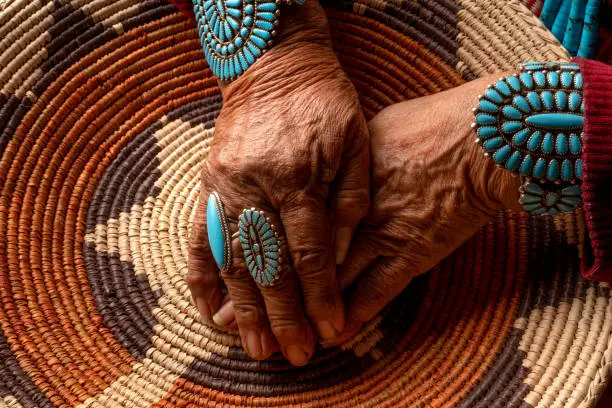
Navajo Turquoise, is a significant and revered gemstone within Navajo culture and the broader Southwestern United States.
Historical and Cultural Significance
At its simplest, turquoise is simply a bringer of good fortune. The Navajo would store it in baskets or hang it from the ceilings to ward off evil in the home, and they would surround the exteriors of homes or graves with it for the same reason. Warriors would carry it to battle to ensure strength and protection. Hunters would bring it on excursions to promote luck and safety. Tribespeople would give it as gifts or symbols of kinship.
Understanding how often turquoise was depended on in day-to-day life really makes you realize why jewelry was the logical next step – adorning the body in this sacred stone is a convenient and attractive way to harness its power. In short, Navajo turquoise jewelry is a means to get in touch with the stone’s aura rather than simply a fashion statement. Here are some key points about it:
- Sacred Stone: Turquoise holds a sacred place in Navajo tradition. It’s considered a stone of protection and good fortune.
- Symbolism: It symbolizes sky, water, and the earth’s bounty, embodying health, happiness, and vitality.
- Use in Jewelry: Navajo artisans are renowned for their turquoise jewelry, often combining the stone with silver in intricate designs. This craftsmanship has been passed down through generations and remains a vital part of Navajo culture and economy.
Characteristics of Turquoise
- Color: Turquoise is known for its striking blue-to-green hues, which come from the presence of copper and iron. Navajo turquoise is often appreciated for its vibrant color and matrix patterns.
- Sources: High-quality turquoise is mined in the Southwestern United States, especially in Arizona, New Mexico, Nevada, and Colorado. Some well-known mines include the Sleeping Beauty, Kingman, and Bisbee mines. One of the most famous mines, the Cerrillos Mine formed the foundation of the Cerrillos Mining District. This area is home to some of the oldest, rarest and most substantial turquoise and mineral workings in North America, utilized from at least 900 AD and possibly earlier. By the 20th century, most of the Cerrillos turquoise lodes were cleaned out. Very few private claims are worked today.
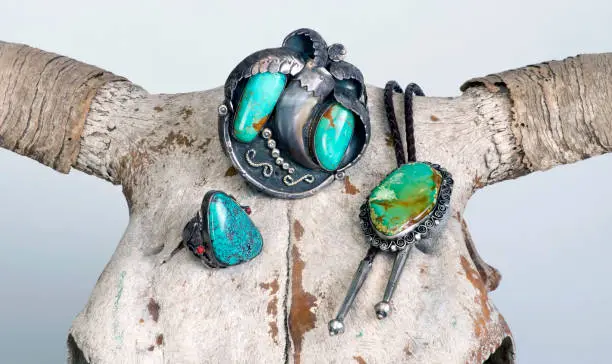

Jewelry and Craftsmanship
- Designs: Navajo jewelry often features bold designs with large turquoise stones set in silver. Techniques like bezel setting, stamping, and inlay work are commonly used.
- Popularity: Navajo turquoise jewelry is highly sought after, both for its beauty and cultural significance. It is sold in galleries, markets, and online, attracting collectors and admirers worldwide.
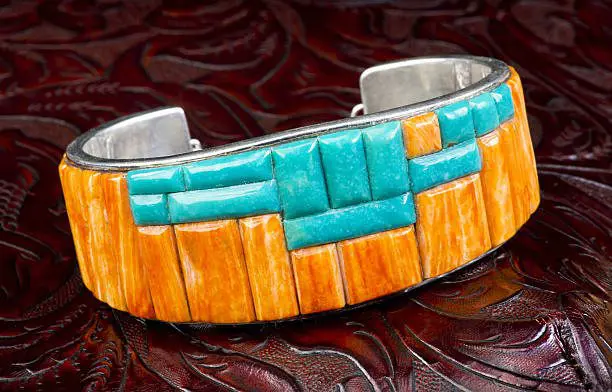
Modern Influence
- Fashion: Turquoise jewelry continues to influence modern fashion, with designers incorporating Navajo styles into contemporary pieces.
- Economic Impact: The sale of turquoise jewelry is an important source of income for Navajo artisans and their communities.
Authenticity
- Authenticity: Due to its popularity, there are many imitations and treated stones in the market. Authentic Navajo turquoise jewelry is often accompanied by certificates of authenticity or documentation about the artist and source of the stone.
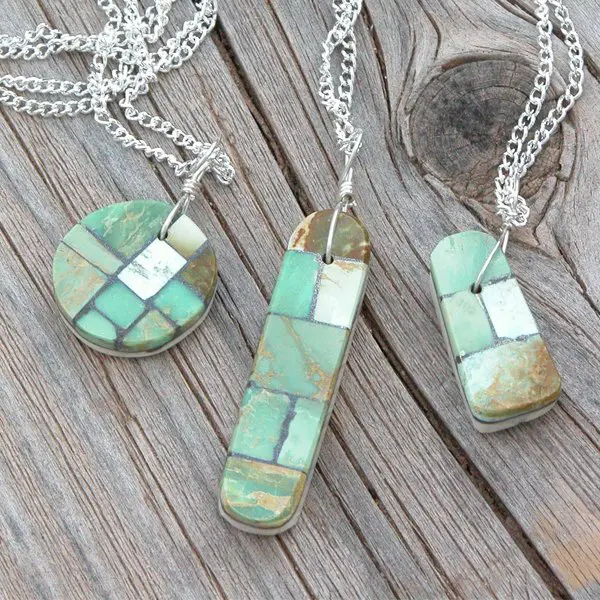
Navaho Turquoise remains a cornerstone of Navajo art and culture, symbolizing a deep connection to nature and tradition while continuing to captivate people with its beauty and craftsmanship.
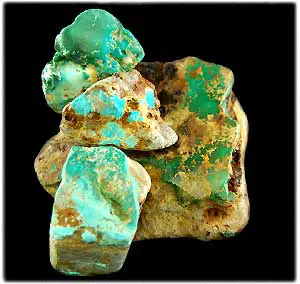
Grades of Turquoise:
Quality Turquoise is obviously determined by the hardness, luster, and color of the stone. Having said this, there are many other facters when determining Turquoise Grades. The first is, do you have Real Turquoise? What is not so obvious about determining the Quality of Turquoise as a collector is that Turquoise has two added factors that are different than most gemstones: the color/matrix factor and the location factor. To a gemologist, Quality Turquoise is determined by the standards of every other gemstone, and usually, they would be looking for solid blue or solid green turquoise with no matrix (host rock), and they would be looking at the hardness and luster (ability to take a polish) to determine if the Turquoise is high-Quality Turquoise or low-Quality Turquoise. A collector, however, has the two added qualities to determine. The color…. this is determined by the collector; to say that one color is more valuable than others on today’s market would be foolish. In the old days, the deeper the blue (naturally), the better quality Turquoise you have, and Blue Turquoise was much more valuable. Today, all colors of turquoise are considered Quality Turquoise; in fact, some of the odd colors, such as lime green, yellow, and hard light whitish blue turquoise, are some of the most valuable.
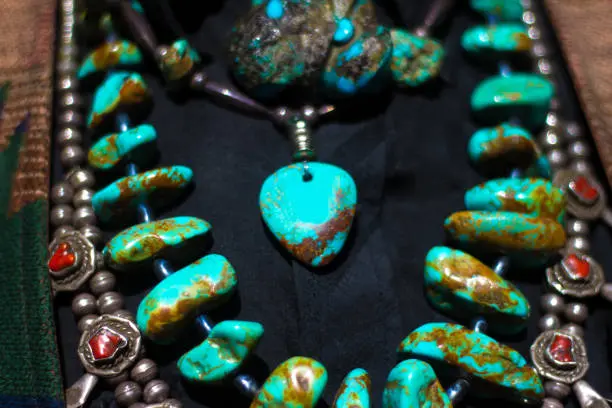
So, are you ready to buy?
Watch this first.

Welcome to 3-Minutes A Day University, where you can learn a little about a lot of things every day in three minutes or less. We help you expand your knowledge and understanding of the real world, and 3-MAD University is tuition-free. Our wide-ranging syllabus includes a fascinating insight into topics including Health and Medicine, Science, Sports, Geography, History, Culinary Arts, Finance and the Economy, Music and Entertainment, and dozens more. You will impress yourself, your friends, and your family with how easy it is to learn facts and perspectives about the world around you. One topic you will never find covered is politics. We hope you enjoyed the previous three minutes. If you liked this post, please pass it along to a friend.
Was this email forwarded to you? Subscribe Here.
© Copyright 2024. 3-Minutes A Day University All Rights Reserved. Unsubscribe


Deborah Kuebler
My ex husband and I used to sell Turquoise jewelry that came from New Mexico. I still have my own treasured pieces!
Great article!
176057401
Well, heck, If I would have known that I would have asked you to write a guest column! I appreciate the comment, Deborah, thank you.